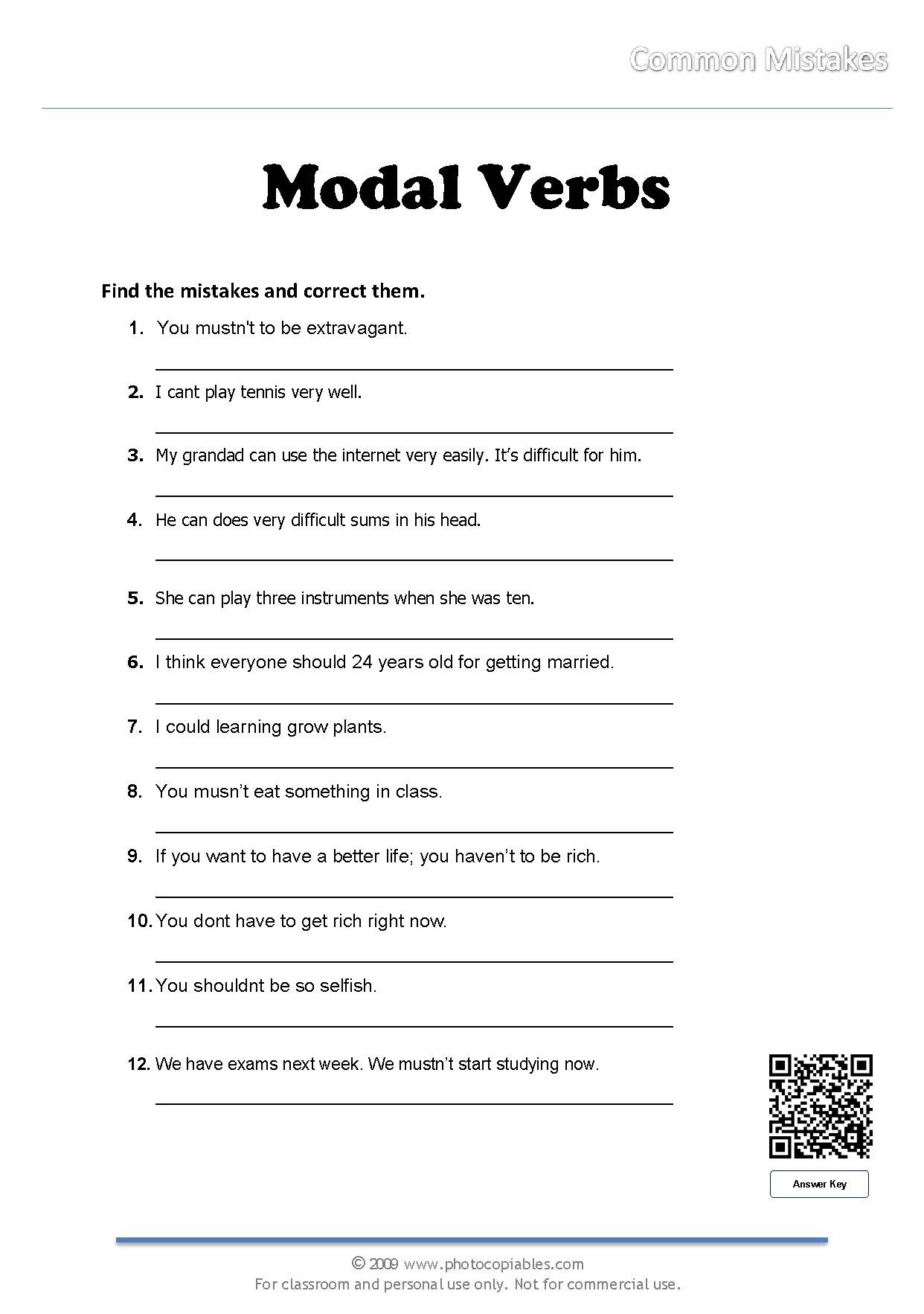

They’re designed to get students using modal verbs in real-world situations, so that they seem relevant and memorable to students. Our modal verb activities are split into two main groups: role plays and verb contrasts. Would, Could, Should: Teaching Modal Verbs for Daily ESL Adventures Of course, you can survive without them, but they do make things much easier.

Modal verbs tend to be vital for travel to English-speaking regions. Just think of the scenarios mentioned earlier, from ordering food to asking for suggestions.However, gently incorporating the concept of contractions is important because it’ll facilitate conversations with native speakers. Modals present an excellent opportunity to introduce contractions. For example, “I would like” is more commonly expressed as “I’d like” in spoken English.ĮSL students sometimes insist on using the non-contracted forms of words.Modals widen your students’ range of English communication. With modals, they can express hypotheticals, opinions, doubts and desires like a native speaker.Well, getting your students comfortable with modal verbs early on has several practical benefits: Plus, modals are tricky! Why complicate things for ESL students at the beginning? Sometimes our externally imposed curriculums even demand that we teach other verb forms first. However, as ESL educators, sometimes we’re so focused on teaching verb tenses lineally that we put off the ever-present modals. We need modals to order food (“Could I get a turkey sub?”), to give suggestions (“You should listen to this band!”) and even to land dates (“Would you like to go to the movies this weekend?”).Ī solid grip on modal verbs provides so much freedom to navigate the English-speaking world. Try FluentU for FREE! Why Teaching Modal Verbs Shouldn’t Wait
Esl past modal verbs exercises pdf#
Luckily for you, you’re a superstar ESL teacher and you can prepare them with realistic modal verb exercises.īut before we get into that, let’s look into what the big deal about modals is and why you should start using them in your classroom right now.ĭownload: This blog post is available as a convenient and portable PDF that youĬan take anywhere. Your ESL students will certainly go through similar scenarios, whether they’re on vacation or not.
Esl past modal verbs exercises how to#
Understanding how to use modal verbs is crucial to everyday communication in English. You might not be conscious of it, but so far your vacation has been totally governed by modal verbs. You have some ideas about where you’d like to go, but you’d still like to ask the front desk clerk for recommendations. Two seconds after the waiter drops the sandwich in front of you, you realize you want mustard on it.Īfter you finish your sandwich, you reach the hotel. “I’d like a sandwich and coffee, please.” Imagine that you’ve just gotten off the plane in a new city for a much-needed vacation. (I feel an obligation to go–later.By ariadneweinberg How to Teach ESL Modal Verbs in Real-life Contexts Lex would have taken Karen to the airport. Lex could have taken Karen to the airport. Lex might have taken Karen to the airport. Therefore, when using past modals with have, special meanings need to be considered. However, since modals express possibility, intention, obligation, etc., they do not always indicate a definite tense. ( should have, could have, would have, etc.) Some past modals can be formed by using have + the past participle of the main verb immediately after the modal. (future reported from the past) Past modals with have


 0 kommentar(er)
0 kommentar(er)
